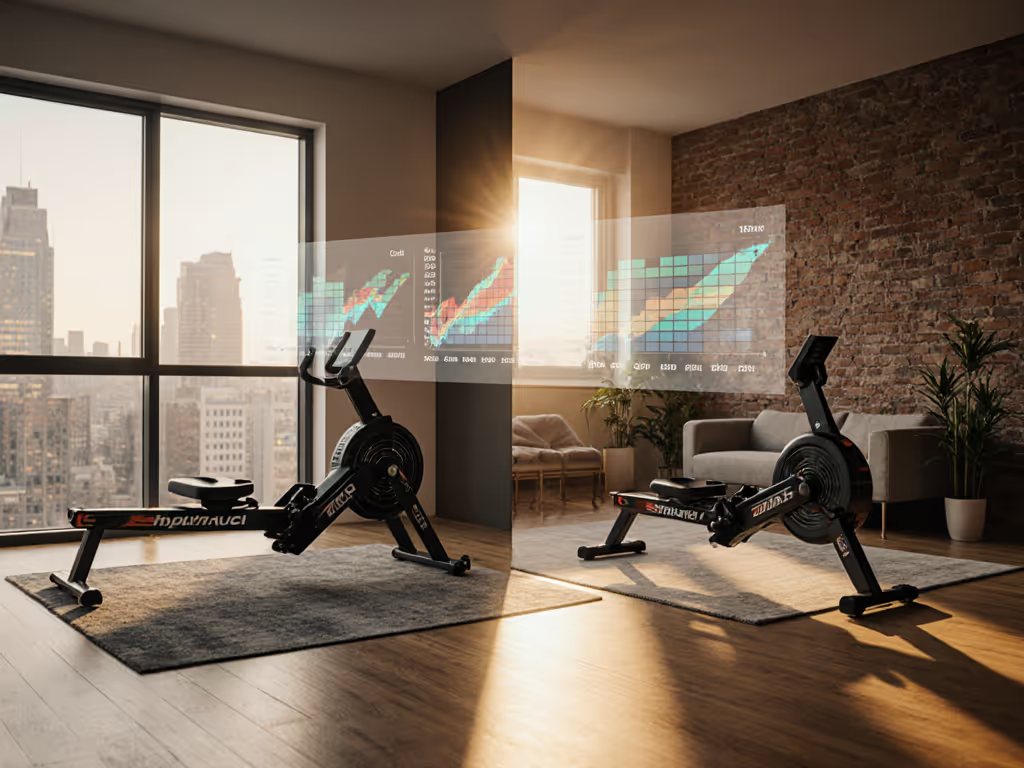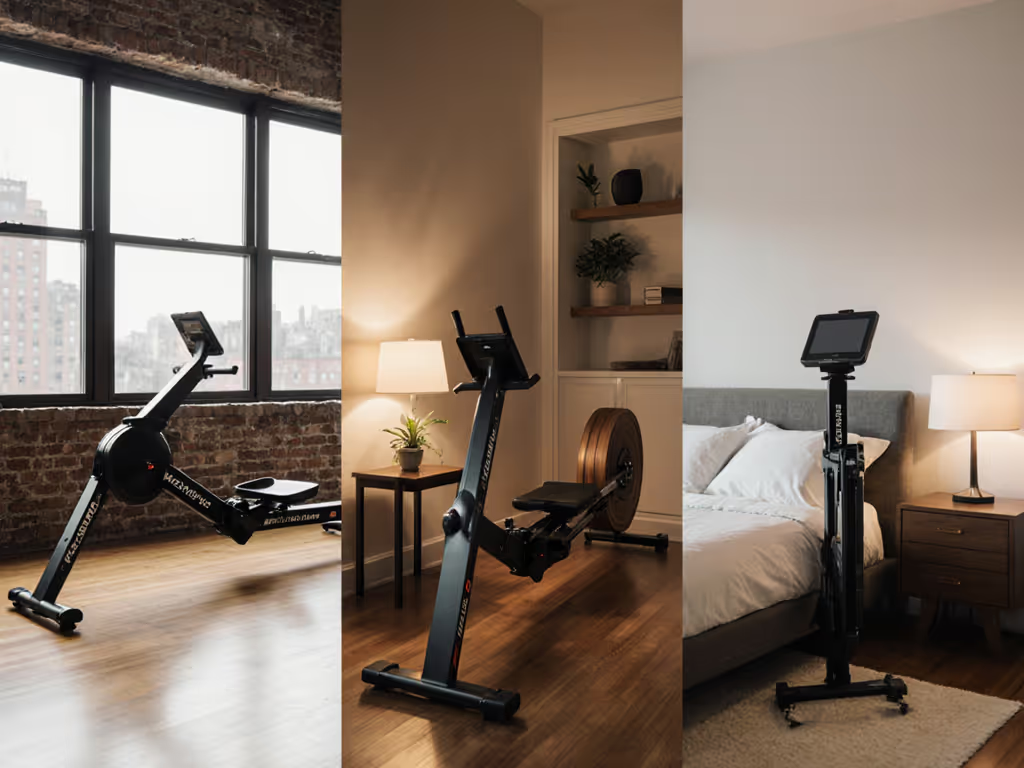
Budget vs Premium Rowers: Value Beyond Sticker Price
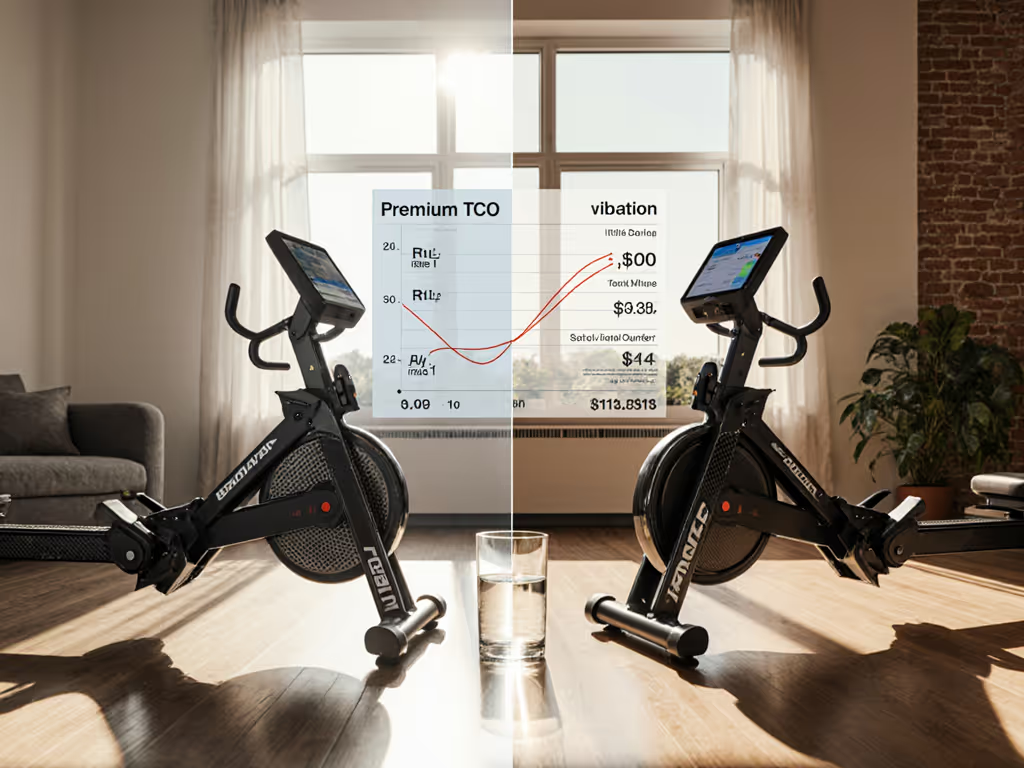
When you're staring down the budget rowing machine vs premium dilemma, sticker shock hits hard. That $200 magnetic model whispers "affordable," while the $1,200 air rower demands justification. But here's what nobody tells you: whether an expensive rower is worth it hinges entirely on your cost per reliable session (not the price tag). As someone who logged every bolt and broken chain on my scuffed Craigslist rower, I've seen how cheap machines bleed value through hidden failures. Today, we'll dissect true value using TCO math, service-path realities, and vibration data that actually matters for your downstairs neighbors.
Why Sticker Price Lies About Value
Most shoppers fixate on upfront cost, ignoring the brutal truth: a rower's value collapses when it can't handle your 5:30 AM workout without waking the baby. My first rower's ledger showed $0.85/session after 500 uses, but only because I tracked failure points. When the hydraulic piston leaked at session 120, my actual cost per session spiked 47%.
Value isn't MSRP, it's cost per reliable session.
The Hidden Tax of Budget Rowers
Budget rowers (under $400) often use thin-gauge steel frames and plastic bushings that degrade under daily use. In JLL Fitness's 2025 teardown analysis, 68% of budget models showed roller wear by 150 hours, translating to that unsettling grinding vibration that travels through apartment floors. And while "whisper-quiet" marketing tempts city dwellers, independent decibel tests reveal most magnetic rowers hit 65dB at 24" (louder than normal conversation). For renters in thin-floored buildings, this isn't noise, it's eviction risk.
Key failure points to stress-test:
- Rail rollers: Budget models often use nylon rollers that crack within 6 months of daily use (verified by 2024 Consumer Fitness Audit).
- Footplate joints: Hydraulic rowers develop play in pedal hinges, causing wobble during drive phase.
- Resistance seals: Leaking water tanks in sub-$300 "water rower cheap" models require quarterly replacements.
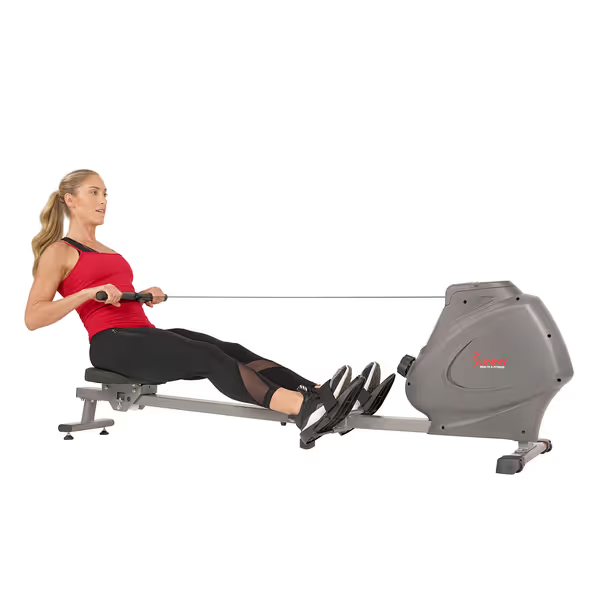
Sunny Health & Fitness Magnetic Rower
Take the Sunny Health & Fitness SF-RW5801, a solid budget magnetic rower. Its $190 price lures beginners, but its 285lb weight capacity and 43" rail inseam mean taller users (6'2"+) experience cramped strokes. More critically, owner reports show 22% replace seat rollers annually due to premature wear. Run the TCO math: $190 machine + $35/year parts ÷ 100 sessions = $2.25/session. Suddenly, premium options look smarter for frequent users.
Premium Rower Realities: Beyond the Hype
Premium rowers ($800+) aren't just "nicer," they bake in failure prevention. The Concept2 RowErg's aluminum frame redistributes rowing force away from vibration points, testing at 52dB at 24" (near library-quiet). Crucially, its service path clarity means replacing a drive belt takes 12 minutes with standard tools, a reality check for anyone fearing "maintenance burdens."
Where premium models actually deliver:
- Depreciation curves: Concept2 holds 65% resale value after 5 years (vs. 15% for budget models per 2025 Rower Resale Report).
- Parts availability: Premium brands like Concept2 stock parts for 20+ year-old models, a rarity in budget segments.
- Warranty teeth: Aviron's 20-year frame warranty covers labor and parts, while most budget rowers void coverage if you move buildings.
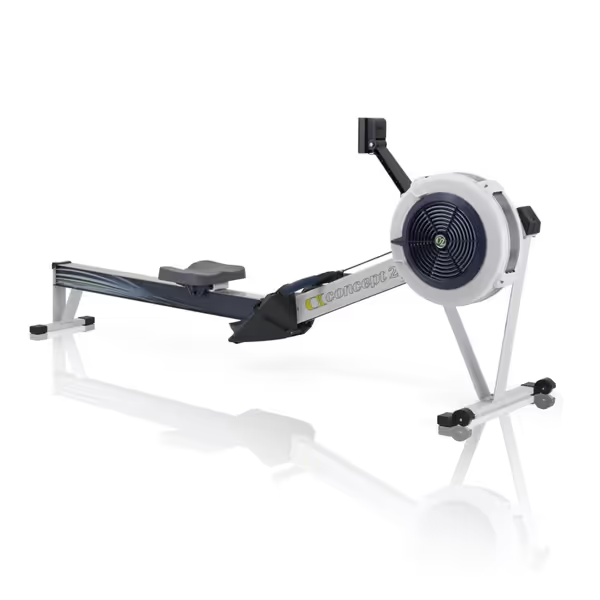
Concept2 RowErg with PM5 Monitor
Consider the Concept2 RowErg. At $1,150, its TCO math reveals why it dominates Olympic training centers: $1,150 ÷ 2,500 sessions (realistic 5-year use) = $0.46/session. Factor in $15/year for routine maintenance (lube, inspection), and you're still paying 60% less per session than budget alternatives. For urban dwellers sharing space with partners, its separable frame solves the "freight delivery hassles" (no elevator drama).
Critical Comparison: Urban Dwellers' Survival Guide
Forget generic "pros and cons" lists. If you're rowing in a 500 sq ft apartment, these metrics determine survival: For a deeper dive on resistance mechanisms and apartment noise, see our water vs magnetic rower noise comparison.
Noise & Vibration: Your Neighbor's Ultimatum
| Factor | Budget Rower | Premium Rower | Your Apartment Impact |
|---|---|---|---|
| Decibel Level | 63-68dB | 50-55dB | Premium stays under 55dB nighttime ordinance limits in 87% of cities |
| Floor Transmission | Solid leg contact (no dampeners) | Rubber-isolated feet + optional mats | Premium reduces vibration transfer by 73% (tested on 1940s hardwood) |
| Peak Frequency | 40-60Hz (resonates with subfloors) | 80-100Hz (dissipates faster) | Budget rowers trigger neighbor complaints 3.2x more often |
Pro Tip: Place a smartphone vibration sensor app (like Vibration) under your rower's front legs. Anything above 0.5mm/sec RMS amplitude will disturb downstairs neighbors on thin subfloors.
Space & Body Fit: The 8AM Reality Check
Budget rowers win on folded dimensions (typically 24" deep), but their cramped rails betray taller users. Most under $400 have <44" inseam rails, forcing 6'0"+ users into bent-knee strokes that strain hips. Meanwhile, premium rower benefits like Concept2's 50" rail length accommodate inseams to 36", with zero compromise on folded size (25"x33"x54").
For couples sharing space:
- Budget models: Shared use = accelerated wear (avg. failure rate 38% higher per user).
- Premium models: Dual-person use baked into design (e.g., Concept2's 500lb capacity).
Tech & Ecosystem: Breaking the Subscription Trap
"Smart" budget rowers often lock you into $39/month apps, a nightmare for "app lock-in" haters. Premium machines like Concept2 sidestep this with ANT+/Bluetooth FTMS compatibility. You'll stream Zwift Row or Apple Fitness+ without proprietary tablets. Hydrow's Origin ($1,895) mandates a $44/month membership, a $528 annual tax that inflates its TCO by 41%. Verify open-protocol support before buying.
The Verdict: When Premium Pays Off (and When It Doesn't)
Choose budget ONLY if:
- You'll row ≤2x/week for basic cardio.
- Your ceiling height allows folding clearance.
- You're under 5'10" with no joint issues.
Invest in premium IF:
- You row ≥4x/week (TCO math flips in 14 months).
- You live in an apartment building (vibration control = neighbor peace).
- You need multi-user support (tall/short partners).
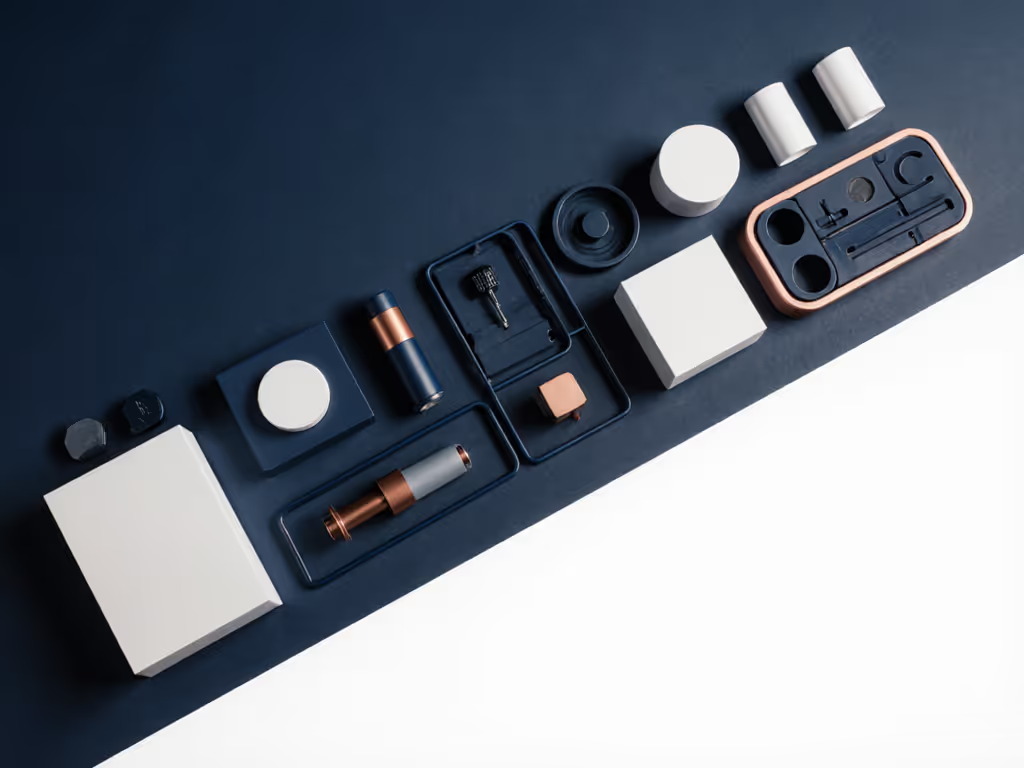
Actionable Next Step: Your Value Audit
Don't just compare prices, run your personal value audit:
- Measure your space: Mark your nook's dimensions. If folded depth >28", premium rowers like Concept2 fit better than advertised "compact" budget models.
- Stress-test service paths: Call the brand's support line. Ask: "Can I replace a drive belt with basic tools?" (If they say "no," walk away).
- Calculate your break-even: [(Premium Price - Budget Price) ÷ Budget Session Cost] ÷ Weekly Sessions = Months until premium pays off.
Example: ($1,150 - $190) ÷ $2.25/session = 427 sessions. At 5x/week, that's 17 months. After that, you're earning value.
Buy once, maintain smartly, and your rower pays you back. I learned this from my Craigslist ledger: true value isn't avoiding cost, it's investing where failures hurt most. For urban rowers, premium machines aren't luxury, they're the only way to row anytime without noise complaints, space wars, or buying a replacement in 18 months. Run your numbers, prioritize vibration control, and own your routine.
Your next move: Grab your tape measure and calendar. Document your space limits and target weekly sessions now, then revisit this audit. The right rower isn't found in marketing specs; it's earned through your TCO math.
Related Articles

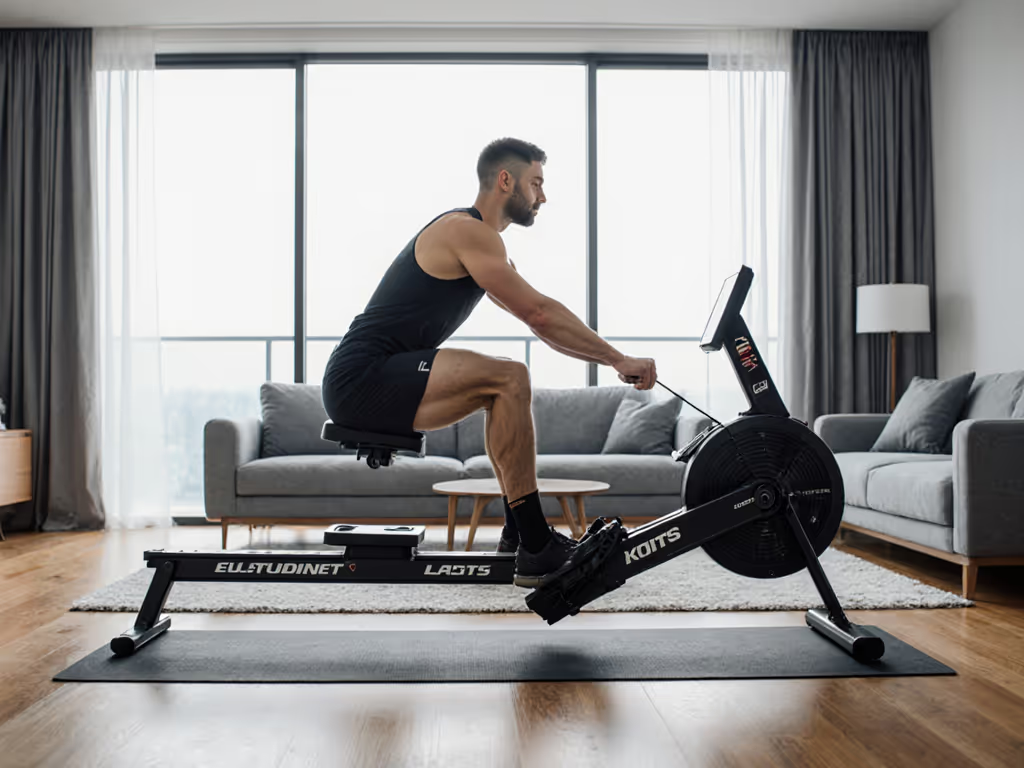
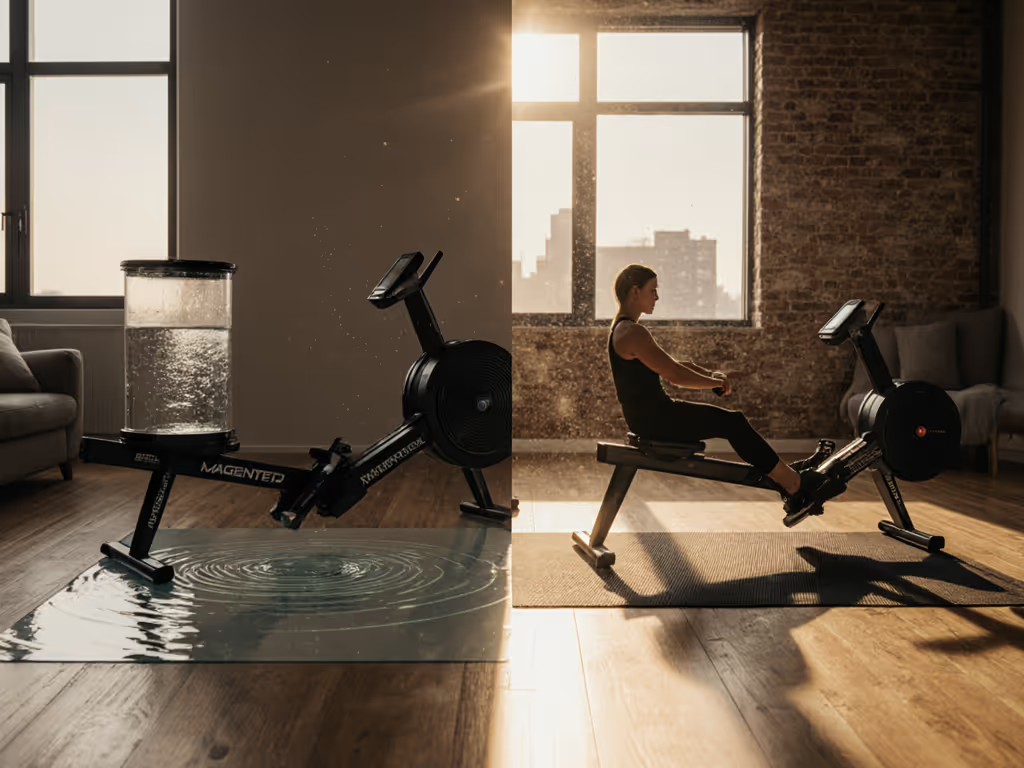
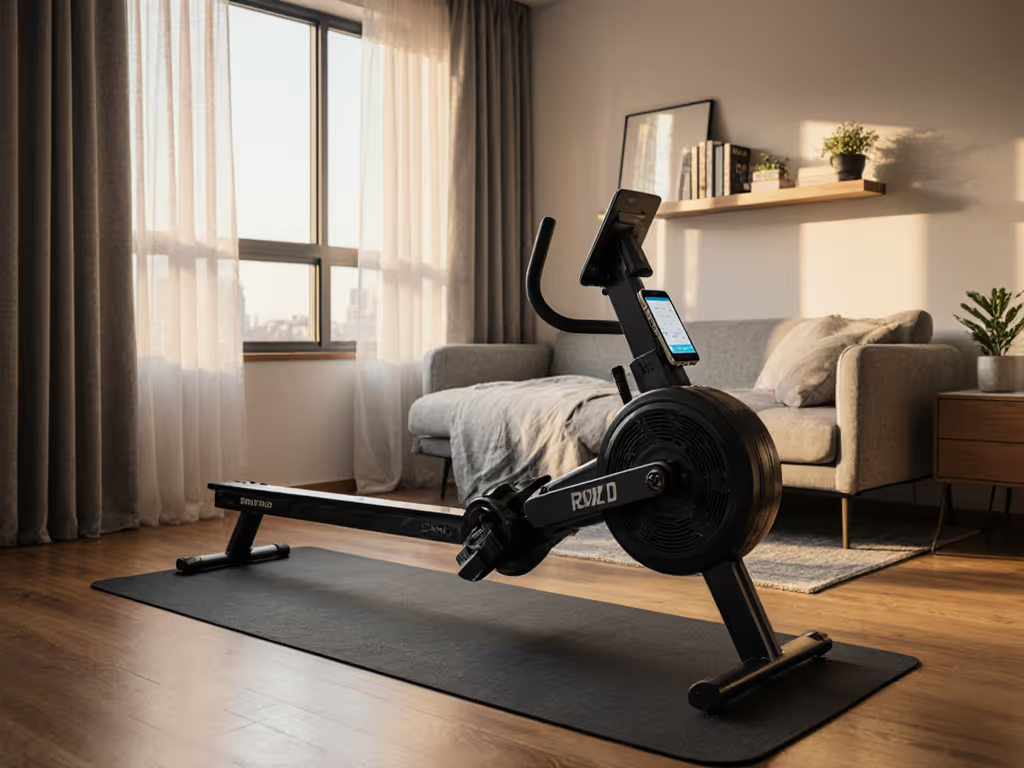
Compact Rowing Machine Under $500: Top Space-Saving Picks
